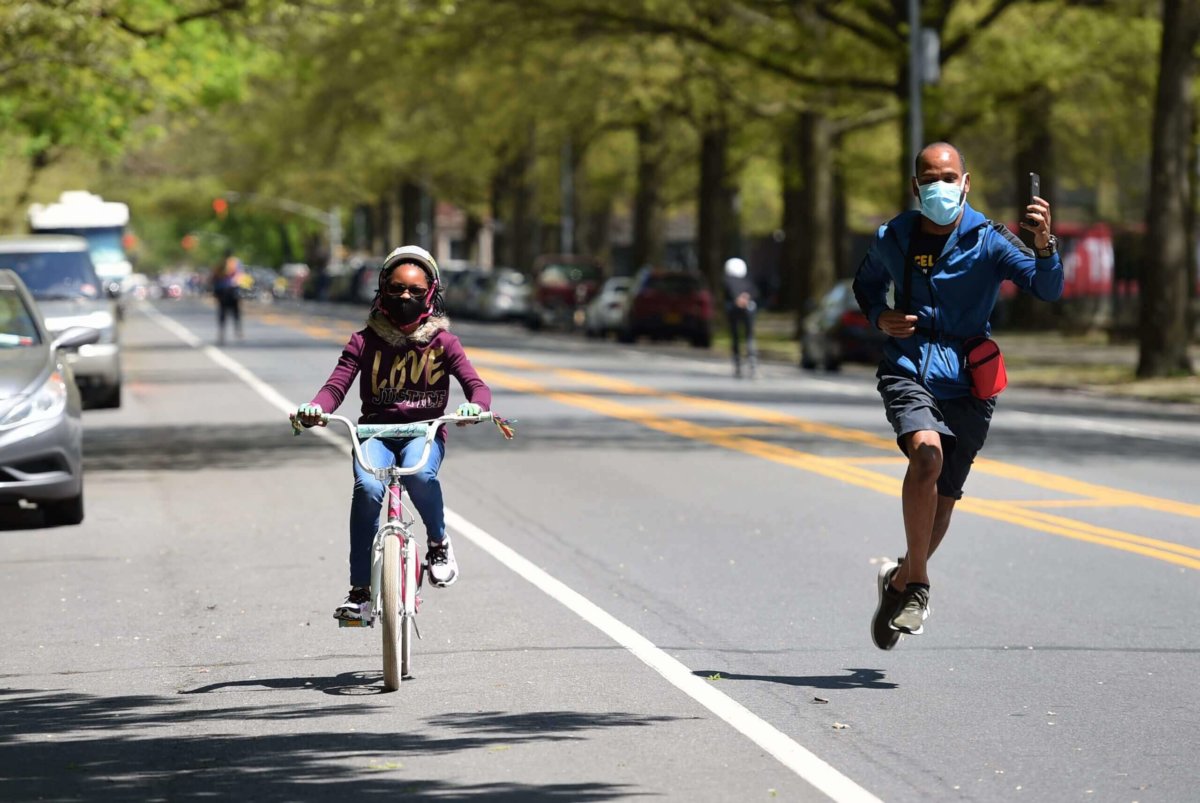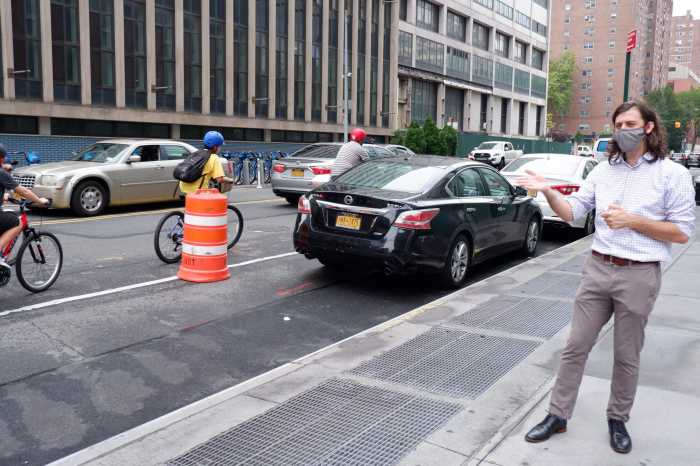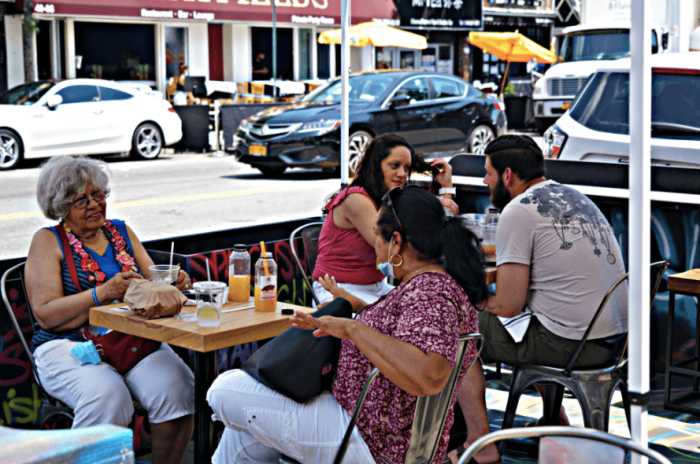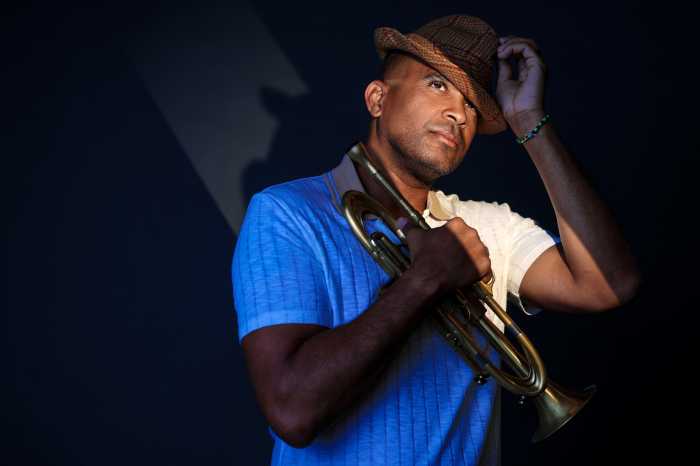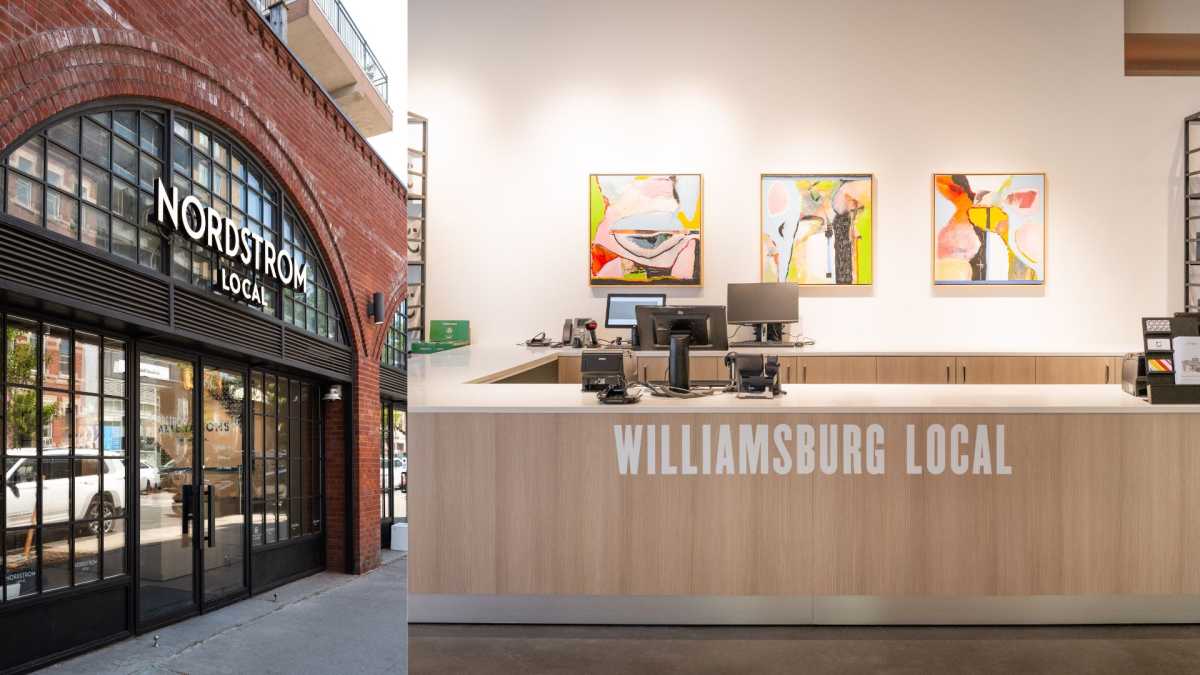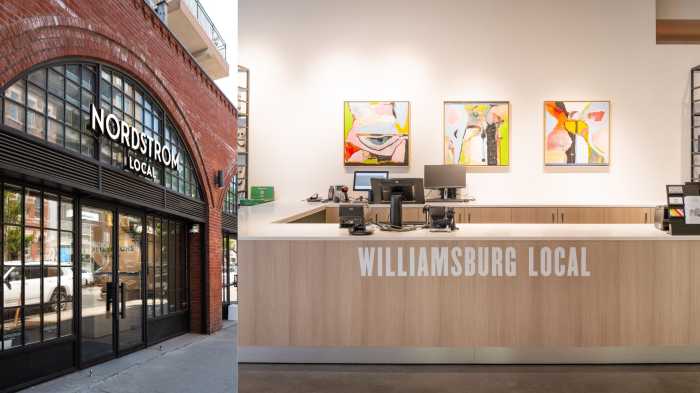Applications have opened for the next season of the “Open Streets” program in New York City, allowing community organizations to apply to open up streets in their neighborhood for recreation and dining.
After a season with mixed success, city officials said they wanted to bring the program back even better this year, with improvements to the infrastructure used to close down streets, and the support given to community groups who maintain them.
“We want people to come forward with your applications because we can do something amazing,” Mayor Bill de Blasio said during a press briefing Thursday. “We are going to ensure that it’s even better in 2021 than in 2020. We have a chance now to learn from some of the things we did in 2020 and improve upon this amazing initiative.”
The program, which de Blasio announced last year will be permanent, found mixed success during its first season. After initial reluctance from Hizzoner to use police resources to maintain the streets, many proved popular in the spring and early summer months.
Patterns quickly emerged, however, that those maintained by the city fell into disrepair, with drivers destroying the cheap wooden sawhorses blocking off the streets and reclaiming the roads for cars, while those maintained by community groups with volunteers and paid staff found great success.
Among the most successful open streets have been Vanderbilt Avenue, Fifth Avenue, and Berry Street in Brooklyn; and 34th Avenue in Queens — all of which are maintained by community organizations, and two of which are part of the Open Streets Dining program.
The city’s new guidelines call for improved barriers and signage. Transportation officials said they would end the use of wooden sawhorses in favor of sturdier metal barricades, and provide resources for community groups to adequately maintain them.
“You’ll see some changes, the signage will be better, we’re replacing the wooden barricades with French barricades, and we are increasing our support for our community partners,” said Department of Transportation Commissioner Hank Gutman.
Members of community organizations who oversee open streets say the city must work to ensure the streets are distributed equitably to communities across the city, and that community groups are given the proper resources to maintain them.
“The first thing we’re looking for is equal access to funds,” said Noel Hidalgo, a member of the North Brooklyn Open Streets Community Coalition. “Where neighborhood community organizations that have struggled to stay afloat through the pandemic are able to tap into financial resources and hire their neighbors to implement open streets. There is a bit of labor – it is not a small feat to execute open streets.”
Hidalgo points out that the success of open streets in neighborhoods like Williamsburg has been due in part to a large population of residents who work from home and are able to spare some time to volunteer and help maintain the streets. Other neighborhoods with larger working-class populations have been denied this privilege, but still want open streets — something the city must address, according to Hidalgo.
“We recognize that there is inequity in communities in other parts of our north Brooklyn neighborhood that don’t have the same level of community members who are working from home, who also want open streets,” Hidalgo said.
The coalition has also pushed for open streets to be implemented as a transportation network for pedestrians and cyclists, rather than one-off streets with no connectivity.
“We can’t have open streets as destinations, that’s what parks are for,” Hidalgo said. “We need open streets to be a connected, interlaced transportation network for pedestrians and cyclists to move about the city freely.”
Applications for open streets are available at the city’s website, nyc.gov.


